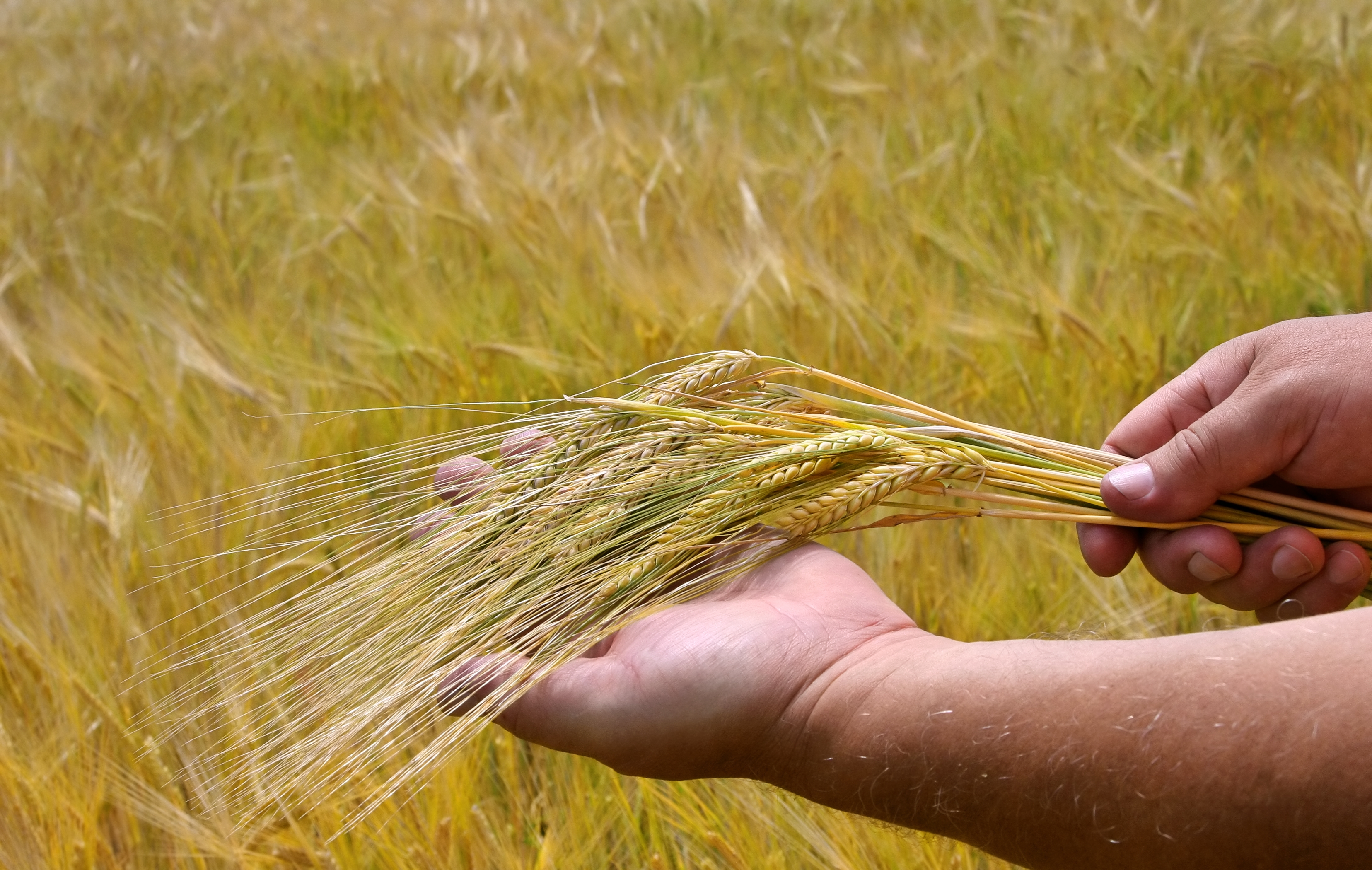Rye
Rye grain is a hardy cereal grain with a deep history and distinctive flavour. Native to southwestern Asia, it has since spread across the globe and thrived especially well in the colder climates of northern and eastern Europe. In Canada, including Alberta, rye has been both a nutritional staple and a key ingredient in the production of certain types of whiskey. Its robust nature and adaptability to various soil types make it a resilient and valuable crop.

About
Rye is a member of the wheat family and is closely related to barley and wheat. Its ability to grow in poor, sandy soils and its tolerance to cold temperatures have made it an ideal crop for regions with challenging climates.
The grain has a long, slender shape with a greenish-brown hue. Nutritionally, rye is rich in dietary fibre, vitamins, and minerals. One of its noteworthy characteristics is its high content of non-cellulosic polysaccharides, which can have a significant impact on bread volume and texture. This is why rye bread often has a denser texture compared to wheat bread. Furthermore, rye has been studied for its potential health benefits, including its role in blood sugar regulation and its possible link to reduced heart disease risk. In agriculture, rye is also used as a cover crop, playing a vital role in soil erosion control and weed suppression.
History
The cultivation of rye dates back to ancient times, with archaeological evidence pointing to its use over 4,000 years ago in what is now modern-day Turkey. Its spread across Europe was gradual, with northern and eastern regions embracing it due to its adaptability to their harsher climates. Throughout the Middle Ages, rye was a staple for many Europeans, particularly for those in non-arable regions.
In Canada, rye found a welcoming environment, both in terms of climate and culture. It became an essential crop for settlers, providing sustenance and also serving as a base for alcoholic beverages like rye whiskey. Alberta, with its vast agricultural potential, became a significant producer, contributing to both the food and beverage industries. Over time, the grain's significance in the Canadian diet waned with the rise of wheat, but its cultural and economic importance, especially in the distillation of Canadian whiskey, has endured.
Ways To Cook
Rye grain's most famous culinary incarnation is rye bread, known for its slightly sour taste and dense texture. To prepare rye for cooking or baking, it's first essential to rinse and soak the grains, reducing cooking time and making them more digestible. Once soaked, rye can be boiled in water or broth until tender, which usually takes around an hour. It can serve as a hearty base for salads, soups, or as a side dish. When milled, rye flour can be used to bake bread, muffins, pancakes, and other baked goods.
Rye berries, the whole grains, can also be sprouted and added to salads or sandwiches. In the realm of beverages, rye grain is a foundational ingredient in rye whiskey, giving it a spicier and more robust flavour profile than other grains. When using rye flour for baking, it's often combined with wheat flour to create a lighter texture due to the lower gluten content of rye. For those looking to fully appreciate rye's unique flavour, a traditional European-style dense rye bread or crispbread can be an authentic and delightful experience.
More on Cooking Rye
Some Of Our Favourite Videos
Alberta Rye Producers
Grainworks Organic Tillers & Millers
About this producerHighwood Crossing
About this producerFoods from this producer:
